-
Posts
3,854 -
Joined
-
Last visited
Content Type
Profiles
Forums
Store
Help Articles
Posts posted by hzrt8w
-
-
Lao Gan Ma (老干妈) is the brand name. They do have different products, all using "old god mom"'s picture in the label.
Personally I think their chili staff is a bit overly MSG-ish. Taste good but I don't use too much in one setting. Typically as a condiment/add-on when eating soup noodles and such. You can certainly use it for cooking if you like.
This jar - the label said "chicken oil" chili. Supposedly they used chicken fat. I think they do, but not entirely 100% chicken fat. Probably some. I don't think they would add chicken meat in it though.
-
Thanks xiaobao. The heat was on high. I wish I have a wok burner but I don't. That's just a regular gas range in American kitchens. How not to burn the meat? Stir it often I guess. Never thought of it.

-
Yeah... I only surface for air once in a while and go back to a deep dive.

Those fermented black beans dry out over time. Still edible but lost a good amount of the flavor. The best is to consume within a few months. I used to think I could keep cheese forever too, LOL.
-
well the results were ok. the goh held its shape, but when i fry the sliced pieces, it falls apart easily, i think im gonna have to make another one today, ill add more rice flour though, ill be back with the results later.
Welcome back from the world to California, aznsailorboi!
 Glad to see some old handle names.
Glad to see some old handle names.You experiment and adjust the rice-flour ratio. More rice flour, more hard. Less rice flour, more soft.
 The rice flour is the "binding agent" to glue all ingredients together. Because it tastes bland, more rice flour also takes away the flavor from the daikon.
The rice flour is the "binding agent" to glue all ingredients together. Because it tastes bland, more rice flour also takes away the flavor from the daikon.Here is a series of pictures where someone made daikon cakes. It's in Chinese but you can get the idea on the process if not the exact recipe.
-
 1
1
-
-
This is a giant flower mushroom (大花菇 花菇 dà huā gū) - a shiitake considerably larger those normally available.
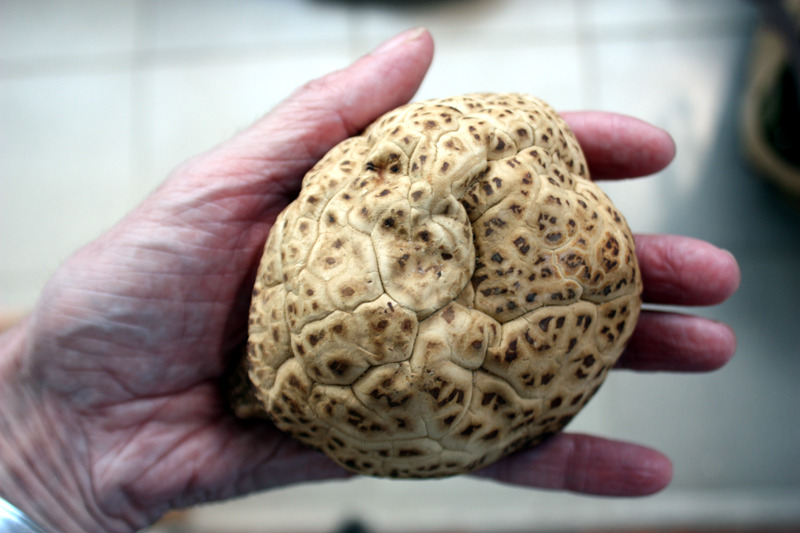
Wow these are really huge shiitake mushroom!
About 2 decades ago these mushrooms used to be very expensive. But these days, perhaps due to technology advancement in growing them, prices on flower mushrooms have come down significantly.
-
Also, in the bag that I didn't purchase, were quite a few star anise. Not sure what they were doing there. Perhaps store together to give the fish flavor. Anyone know?
Maybe trying to keep out the small bugs. If so, apparently didn't work.

-
I am so glad that you like it, Alcuin.
I vary the dry spices to put in sometimes. A little bit of black pepper. Coriander seeds. Cinnamon versus Chinese cinnamon. The only one that I found not working quite well was cumin. Even dried sliced licorice - I found it soothing.

-
(Note: you may also add cummin seeds, white or black peppercorns if you like.)
On second thought, the cummin spice may be too overpowering.
-
..... but I could do something like shank with this right? When I do that, do you just braise the beef, slice, and serve with some of the sauce?
Alcuin:
What you mentioned... I posted a recipe a while back:
Beef Shank Braised with Five Spice and Soy Sauce (五香牛腱)
In that recipe, I used Lee Kum Kee's bottled "master sauce". You actually can forgo that. Just create your own master sauce using the ingredients and method listed in the opening post.
-
I just made some soy sauce chicken last night. I am happy with the result. I am jotting down the ingredients and portions I used to make the "Master Sauce" (Lo Shui). My measurements are approximate. You don't need to follow them to the exact. In fact, alter it and experiment with it to create your own.
The "Master Sauce" - the initial pot:
- 2 cups of dark soy sauce
- 1 cup of light soy sauce
- 1 cup of sweet soy sauce (kecap manis)
- 3 cups of water
- 1/2 cup of Shao Xing rice wine
- 1 small whole onion, peeled and wedged
- 4 to 5 cloves of garlic, peeled and smashed
- 1 green onion, cut in about 1-inch pieces
- 3 to 4 inches length of fresh ginger, cut into thick slices
For the spices:
- 3 teaspoons of fennel seeds
- 3 teaspoons of cloves
- 3 to 4 whole cardamom - chop them into big pieces or crack them
- 20 star anises, break them up
- 2 sticks of cinnamon, hand-break them into small shreds
- 3 teaspoons of Sichuan peppercorn
- 2 to 3 pieces of dried tangerine peels (chan pei)
- About 3 big cubes (each about 2-inch x 2-inch x 1-inch) of rock sugar
(Note: you may also add cummin seeds, white or black peppercorns if you like.)
(Note 2: If you want to take time to cook, use whole spices. Don't use the powder form. The result from cooking with whole spices is so much better.)
Pour all the ingredients into a medium-size pot. Bring the sauce to a boil. Do an initial boiling for about 5 minutes. Then reduce the heat to a simmer. Let it bubble for about 3 hours. There... you have a pot of "Master Sauce" freshly made.
You may use the sauce for flavoring all Cantonese braised dishes (e.g. beef brisket, abalone, pork belly, etc.)... or use it to cook soy sauce chicken. Or use it to cook tea eggs.
For home-cooked soy sauce chicken... I only do split chicken breast with ribs and not a whole chicken. You may cook a small whole chicken with it. (I am not sure if the above portion is enough to cover the chicken, so adjust if needed). Bring the sauce to a high-heat boil. Add the chicken/breasts/thighs. Boil for about 13 minutes or so. Turn off the heat. Let the chicken/breasts/thighs continue to cook in the sauce for about 15 to 20 more minutes at least. Remove, chop up and serve with some braising liquid.
This pot of "Master Sauce" is like the mother dough of your sour dough bread. Filter out all the spices and residues. Save the liquid only in the freezer. (It won't even freeze up) Next time you make another round of soy sauce chicken: add more ingredients of everything. The soy sauces - probably use about one quarter of the portion suggested above. Spices - about the same. Rock sugar - only 1 cube.
-
The problem with this recipe is that it uses too little ingredient portions to make the eggs. I can understand it... someone wants to make 4 to 5 eggs, so they use a little bit of this a little bit of that, and so not ending up with a big pot of sauce after cooking. But think about it... if the simmering sauce is only like 1-inch deep in the pan/pot, how can the eggs be flavored fully? The cooking time seems too short too.
A better approach is: use more soy sauce, water, spices, etc.. Make a big pot of tea-egg braising sauce. Make sure each egg is fully submerged in the sauce. Simmer them for a few hours (min 2 to 3 hours). Let the eggs cool and soaked in the sauce. (But 2 to 3 hours should be long enough that the eggs are ready to be served.) Afterwards, you filter out the residue from the sauce and save the sauce in a plastic container. Put it in a freezer and re-use it next time you make the eggs again. Each time you cook tea eggs, put in more soy sauce, water, spices, etc. and repeat the cycle.
-
.....
She simmered the stomach until it was tender in a "seasoned broth". She would cool and slice it and then crisp it in a pan. The sauce is what I need help with, it was a spicy brown sauce, but I have no idea what was in it exactly
...
I know my description is pretty vague, but is anyone familiar with a dish like this?
What you had described seemed to be the common "red braised" cooking method. There are many different recipes to "brew" you own brown sauce, or "seasoned broth", or "red braise liquid". Typically it is a combination of thick/dark soy sauce, "five spice" combination, rock sugar, water. The meat or protein you cook using the red braise liquid will in turn add flavor to the liquid and shall be kept and re-used the next time. The process is repeated. And with each time you add some more soy/spices/sugar/water.
Take a look at a post I made a while back. That should give you a starting point. I cooked beef shank in the recipe but it should suit you well. Use pork stomach instead of beef shank.
-
Ha! The joke was on me! Sorry I didn't read carefully enough.

-
.....in Beijing. Sa Cha sauce is a good example, Beijingers don't normally use it. Red Vinegar is another, the supermarkets don't stock it.
Thanks for your kind words Big Joe.
I expected that Sa Cha sauce is probably not common "up north" from Guangdong. Red Vinegar? Really? I thought that is a pan-China thing like rice wine.
Are there local grocery markets geared for southerners? There should be as there are plenty of Cantonese restaurants in Beijing these days too, no?
-
... I'm not quite sure wether I should be dicing the garlic up very very thin or if I'm supposed to not dice it at all and take the lumps out before serving it, what'd you suggest?
Restaurants do this dish with whole garlic. Good either way. My stove can't burn the whole garlic fast enough so I chopped them. I prefer no raw garlic. Do whichever way you wish!

(The whole garlic seems more appealing in plating.)
-
Jack: thank you very much for sharing your experience. Very interesting reads and pictures.
RE: The Nanjing meal
Picture #13 and #14 (I think)...
OMG #1: that restaurant seemed to be an upscale one from the use of such ceramic plates and dishes (western style designs, very rare in China maybe until recent years). That you would think... they wouldn't put a clay pot (okay... iron pot) over such a burnt wooden plaque to serve it up!
OMG #2: the next picture... chips on the soup bowl. Five counts!
It just goes to show some of the odd-ball things I have seen in China.
RE: Meal on the bullet train
Q #1: there is a meal car on a bullet train?
Q #2: you had a FOURTEEN course meal on a bullet train???
RE: The vegetable on ice
I would have guessed fresh hot pepper like Anaheim but the seeds seemed too big. I am scratching my head on that one too and would love to hear the answer.
-
.....
- but the problem is, WHERE IS WEST VILLA!?!?!
Ah... sorry... didn't think of that. Should have said "Ice Rink, Ice Rink"...

Indeed that's a big mall. I did see this West Villa was filled mostly by locals. When I was there I saw about 2 to 3 tables of non-Chinese patrons. But they were all accompanied by some Chinese. Business entertainment it seemed.
Cheung Chau - there are 3 to 4 restaurants working the same format near the main pier. I don't know which is better than the other. Comparing Sai Kung and Cheung Chau, I do think the seafood in Sai Kung is better. My last trip, my "live seafood" feast was at Po Toi O. My friend's treat. It was very good. He said that eating at Po Toi O is about the same as at Sai Kung, but price being much lower. Something like 40% lower. It is hard to get to Po Toi O without a car. Taxi is okay, for sure... but that makes it a really expensive meal...
-
Perhaps there's a thread about excellent Chinese cookbooks here, I should search for it.
Three are a few. e.g.
Authentic Chinese Cookbook Recommendations
Chinese cookbooks What's your favorite?
Or do a Google search with:
site:egullet.org Chinese cookbook
and go through the list.
-
Lunch today at West Villa in Central. To our surprise, no dim sum, but they did do Cha Siu, which was great,
Sorry I didn't know they serve different items at different locations. Thought they would do dim sum at Central also. I too went to only the one at Tai Koo.
then to Cheung Chau and seafood for early dinner.
I think eating at Cheung Chau... better to pick your live seafood from the tanks. We dined at one of those restaurants one time and took the "packaged meal" for two persons. They gave us the small size ingredients for all dishes (e.g. manis shrimp, razor clams, fish, abalone, etc..). Economical... but we just got what we paid for (or didn't paid for...)!

Lantau the day after during the day, and then at night? Any suggestions?
If you are going to be coming back from Tung Chung... I would suggest to go to that:
Golden Shanghai Restaurant (金滬庭京川滬菜館) -
They are inside the Citigate Plaza. From the street level, need to go up the escalator to the 1/F or 2/F, then walk the pedestrian overpass (all inside the mall) to the other side. They serve Sichuan and Shanghai styles dishes, which I think are very good.
-
ICC (International Commerce Centre) is the latest, tallest building in Hong Kong. They have an observation deck called "Sky100" (on the 100/F). If you plan to visit Sky100... I have the following alternative suggestion.
Sky100 charges you HKD $150 for admission to the observation deck. Just for sight-seeing on 100/F in the ICC building.
Alternatively: Go to the Ritz Carlton Hotel (same ICC building, different entrance). Take the elevator to the 102/F main lobby. Transfer to the elevator to the 118/F - Ozone lounge. Ozone has some indoor seatings, as well as some semi-outdoor ones (best view). There, you can have the birdeye view of Victoria Harbour and Hong Kong Island from 118/F from the same building. No admission charge. No minimum charge (before 11pm I think). HKD $150 that you would otherwise spend on the admission ticket to Sky100 can buy you about 2 beers. You can sit down, enjoy the view while you sip on your drinks. (Only draw back is... the semi-outdoor section is a smoking section.)
-
If you like Sichuan style food... Wing Lai Yuen (think dan dan noodle again) has its original restaurant near Wong Tai Sin. So if you plan to visit Wong Tai Sin during your stay, that would be a good place for a meal. It's easier to get to than the one at Whampoa Garden.
-
..... so we went to Peking Garden in the Pacific Place mall.
Did you have their beggar chicken too?
 The one that I saw people mentioned often is the one at Star House, Tsim Sha Tsui.
The one that I saw people mentioned often is the one at Star House, Tsim Sha Tsui.Pacific Place: Zen restaurant is right there too. Another very good, and high end Cantonese restaurant.
-
Looking for the best Hainan chicken, .....
Perhaps you can try the
Koon Thai Hai Nan Chicken Restaurant
In Wan Chai:
G/F., Takan Lodge, 199-201 Johnston Road, Wan Chai
It seems to be their specialty. Though I haven't tried it myself.
There is another hole-in-the-wall outfit who specialized in Hai Nan Chicken Rice in Jordan. They don't have any menu. Because Hai Nan Chicken Rice is the only thing they serve. If you go to Temple Street to do some shopping at night... I don't recall the restaurant's name. But they are one block away from Temple Street. At around the intersection of Woosung Street and Ning-Po Street. Along Woosung Street (west side).
-
Din Tai Fung Restaurant, Causeway Bay
Address: G/F, 68 Yee Woo Street , Causeway Bay
銅鑼灣怡和街68號地下
Style: Taiwan | Shanghai | Chinese Restaurant | Dim Sum | Chinese Buns | Business Dining | Group Dining
Tel: 3160 8998
http://www.openrice.com/english/restaurant/sr2.htm?shopid=39683
Two locations for this international chain of Taiwanese small eat restaurants in Hong Kong: Tsimshatsui and Causeway Bay. We have been to the Din Tai Fung in Arcadia, California. We went to this branch in Causeway Bay in Hong Kong. They didn't disappoint. We had a nice meal. They manage to keep their quality very consistent among different branches. I recommend dining there.
The giant billboard for Din Tai Fung at the side of the building (next to Regal Hong Kong Hotel).
The order form. They don't carry that many items. Easy. Straight forward.
Some pictures on their menu to entice you.
Braised beef shank, thinly sliced. One of their signature dishes. Very flavorful. Full of the five spices flavor.
A basket of xiaolongbao (6 in an order). This is what Din Tai Fung is famous for. Signature xiaolongbao. Super thin wrapper (and manages to hold up the hot soup inside). Color is almost pure white instead of pale yellow that you are accustomed to seeing. Juicy. Meaty. Must have.
Another signature dish: Porkchop fried rice. You gotta order this and try it. The fried rice is moist, soft. The egg white and egg yolk are separate instead of mixed, and are barely cooked. Taste almost like poached eggs. The porkchop is slightly breaded and deep-fried. Very soft and tender.
Another signature dish: dan dan noodles. Very good peanutty flavor.
Spicy wontons (hung yau chow sou). The Sichuan style kind of wonton with soy sause in chili oil, strong in garlic flavor. Very good too.
The signature "fish bowl" setup looking into the kitchen where their xiaolongbao dumplings are wrapped.
Overall eval for Din Tai Fung is: very good Taiwanese small eats. Too many signature dishes. Too little time to sample them all. They manage to maintain a very good quality in food, service, and attractiveness in dining atmosphere. Highly recommended.



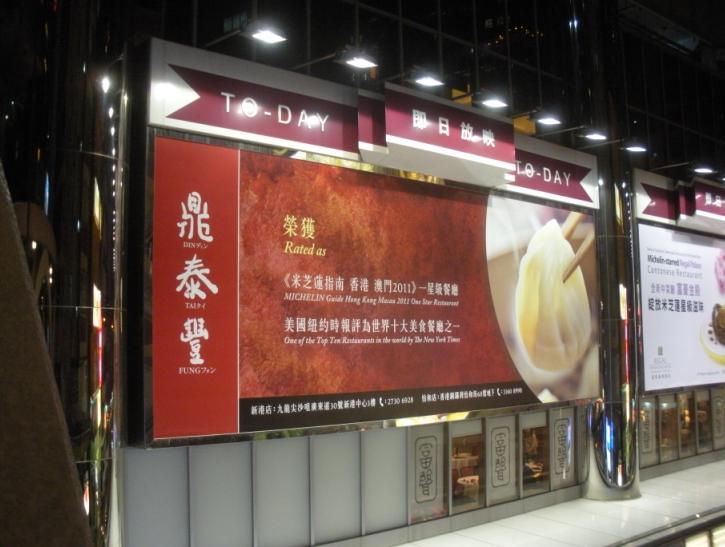

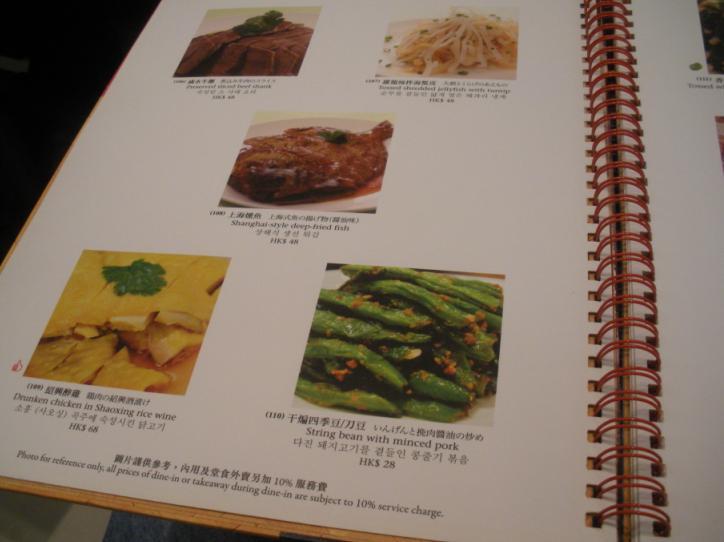
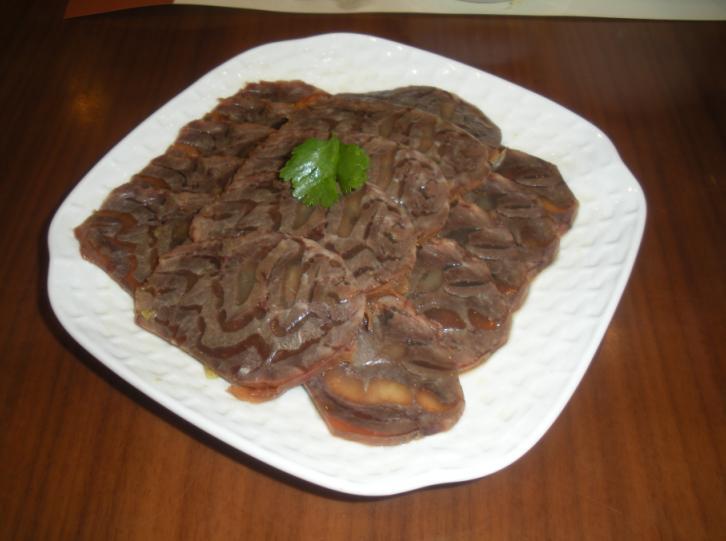
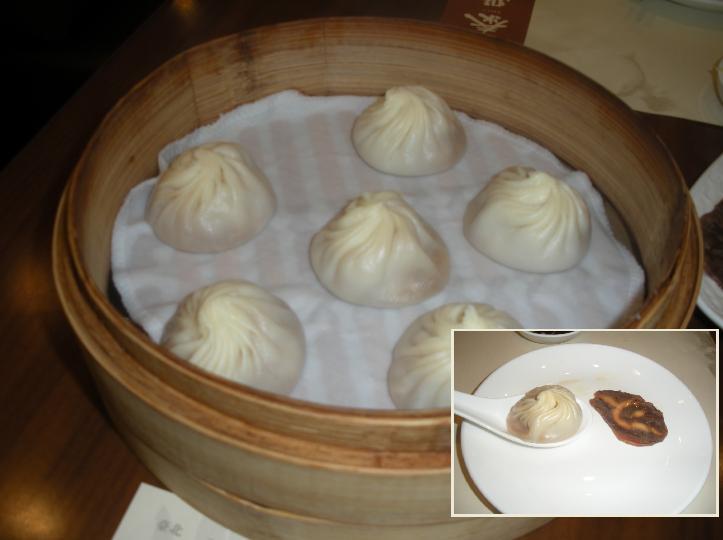
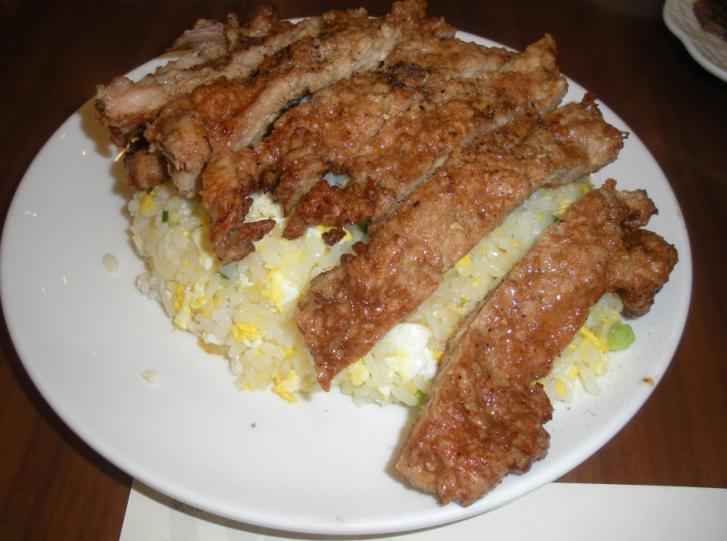
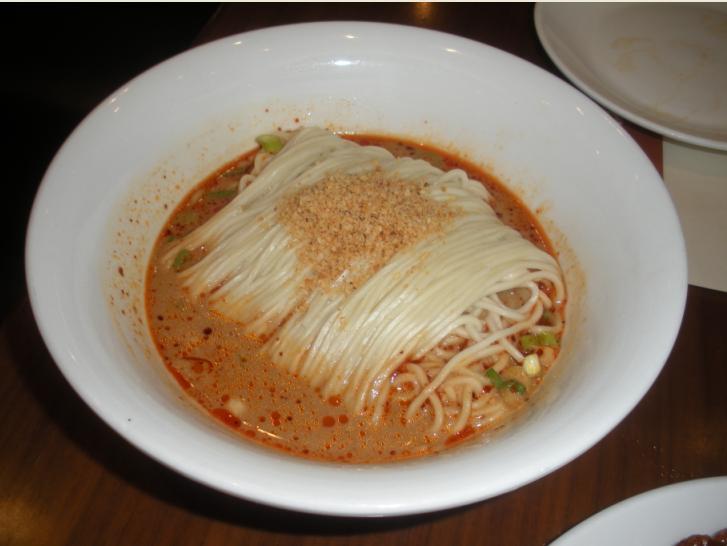
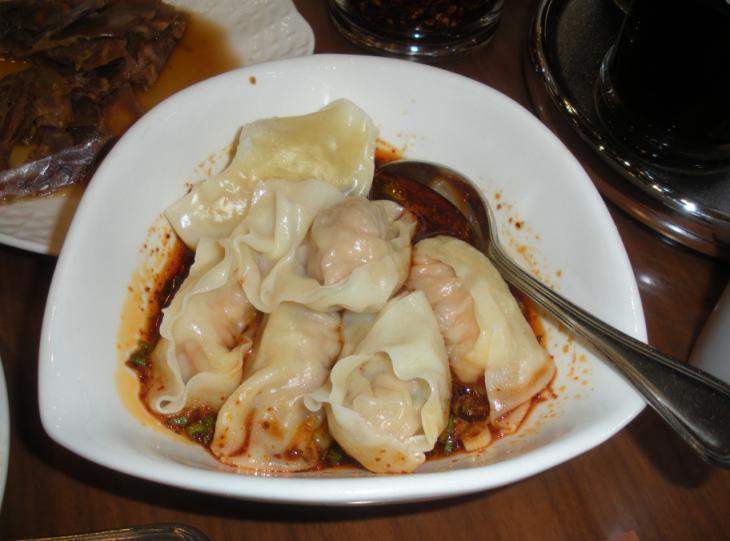

A sauce for eating with Chinese dumplings (Jiaozi)
in China: Cooking & Baking
Posted
There are all kinds of combinations you can do and I think most are around using chili sauce, light soy sauce, diluted with water and add some other things.
You can try something like this:
Get a jar of garlic chili paste. Many Asian stores have them. Some taste better than the others.
Use about 2 spoonful of garlic chili past. Dilute it with boiled water, ratio about 5 to 1.
Then add in 3 spoonful of light soy sauce (the salty one).
Add in some aromatic things to jazz up the taste: suggestions - fried garlic, fried shallot, chopped green onions, small amount of grated ginger, chopped cilantro, etc..
Can add a little bit of ground black pepper, or freshly chopped Sichuan peppercorns (Hua Jiao) on top.